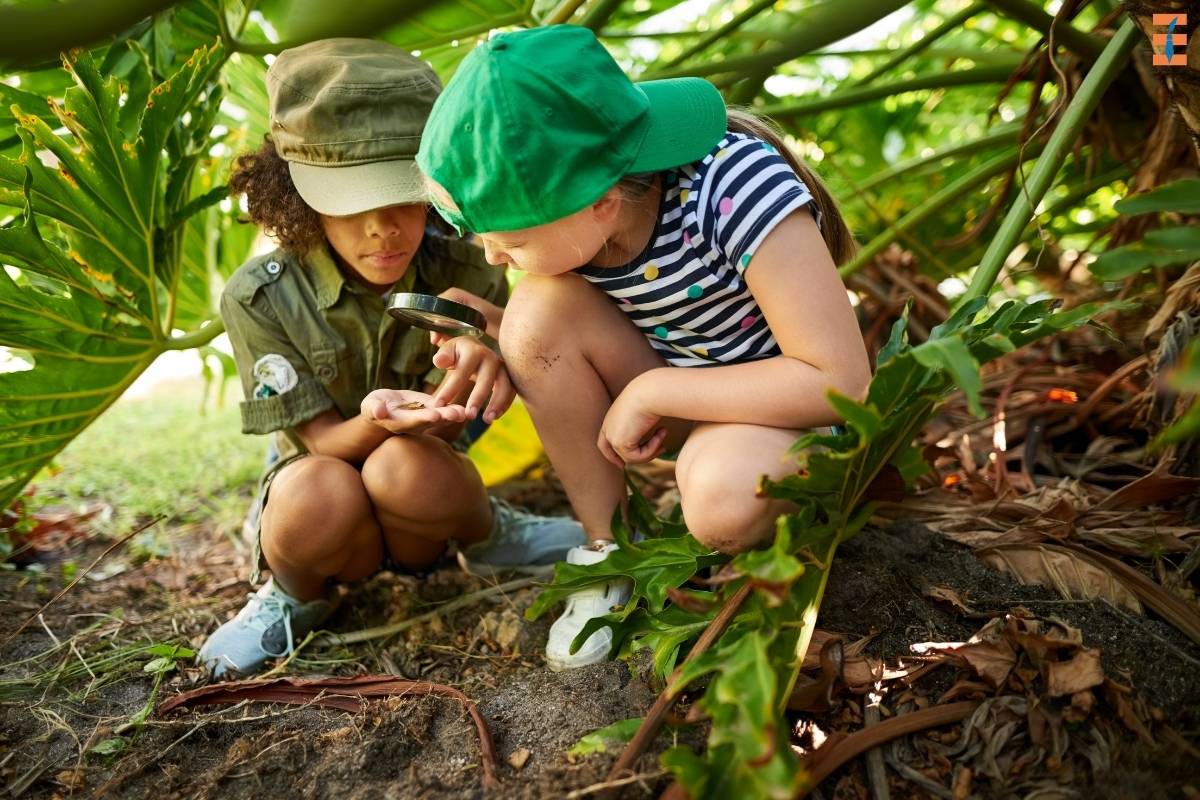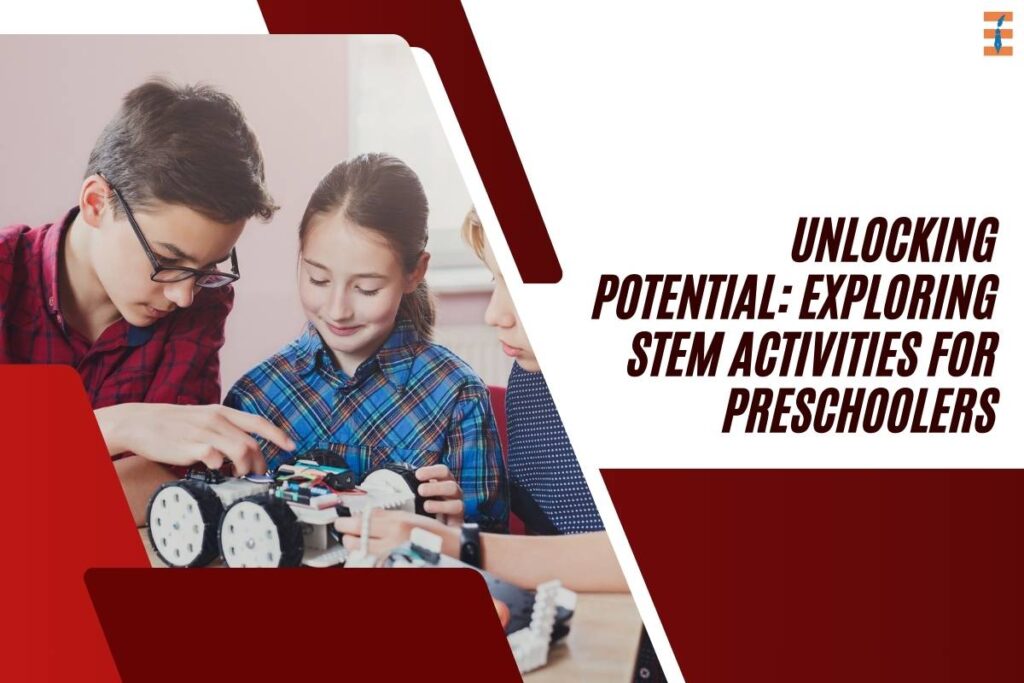In today’s rapidly evolving world, fostering a love for science, technology, engineering, and mathematics (STEM) from an early age has become increasingly crucial. As educators and parents recognize the importance of cultivating critical thinking, problem-solving skills, and innovation, the spotlight has turned to introducing STEM activities to preschoolers. These activities not only ignite curiosity but also lay the foundation for lifelong learning.
In this comprehensive guide, we delve into the realm of STEM activities for preschoolers, exploring their benefits, strategies for implementation, and a plethora of engaging ideas to spark young minds.
Why STEM Activities for Preschoolers Matter?

- STEM activities for preschoolers serve as a gateway to exploration and discovery. By integrating concepts from science, technology, engineering, and mathematics into early childhood education, children are encouraged to ask questions, experiment, and develop a deeper understanding of the world around them. Through hands-on experiences, they learn to think critically, solve problems creatively, and collaborate with their peers – essential skills that will serve them well in their academic journey and future careers.
- STEM activities for preschoolers are super important because they help kids explore and learn about cool stuff in the world around them. You know, like how things work and why stuff happens. When kids do STEM activities, they get to ask lots of questions, try out fun experiments, and figure out how things fit together. It’s like a big adventure where they’re the scientists and engineers!
- These hands-on STEM activities engage preschoolers in learning through play. Whether they’re building towers, mixing colors, or counting toys, children develop important skills like problem-solving and critical thinking. By making education enjoyable and accessible, these activities foster a love for learning from an early age. Through exploration and discovery, kids lay a strong foundation for future academic success while having fun and building confidence in their abilities.
- One of the coolest things about STEM activities for preschoolers is that they help kids become super good at thinking. They learn to ask questions, like “Why does the sky look blue?” or “How does a plant grow?” Then they try to find answers by experimenting and testing their ideas. This helps them become good at problem-solving, which is a skill they’ll need for school and jobs when they grow up.
- Engaging in STEM activities with friends is not only enjoyable but also teaches valuable lessons in teamwork and collaboration. Children learn to communicate, share ideas, and support each other, fostering a sense of camaraderie and mutual learning. These social skills are essential for making friends and succeeding academically. By working together, kids not only have fun discovering new concepts but also develop important interpersonal skills that will benefit them throughout their lives.
Implementing STEM Activities in Preschool Settings
Introducing STEM activities in preschool is all about creating a fun, hands-on learning experience for young children, with teachers playing a crucial role. They carefully plan activities tailored to preschoolers’ interests and set up a supportive classroom environment where curiosity is encouraged.
During STEM activities, teachers guide children through exploration, encouraging them to ask questions and try different ideas. Instead of simply providing answers, they facilitate learning by helping children discover concepts on their own.
Teachers adapt activities to suit each child’s interests and abilities, using easy-to-manipulate materials like building blocks and colorful toys. The ultimate goal is to ignite a passion for STEM early on, showing children that science, math, and technology can be enjoyable.
By making learning engaging and exciting, teachers inspire young minds, nurturing the belief that they can pursue careers in STEM fields. Through these experiences, preschoolers develop essential skills like critical thinking and problem-solving, laying a strong foundation for future success.
Here are 8 Engaging STEM Activities for Preschoolers:

Now, let’s dive into a variety of STEM activities tailored specifically for preschoolers. From simple experiments to hands-on projects, these activities are designed to captivate young minds and instill a love for learning.
1. Colorful Chemistry
Engage preschoolers in STEM activities for preschoolers with captivating color-mixing experiments. Using primary colors, children explore chemistry as they blend hues to create secondary colors. This hands-on activity teaches basic color theory while fostering skills like observation and prediction.
2. Building Bridges
Challenge preschoolers to become budding engineers by engaging in STEM activities by designing and constructing bridges using everyday materials like popsicle sticks, tape, and cardboard. Encourage experimentation with various designs and test the strength of their creations by adding weight. This hands-on activity promotes problem-solving skills and introduces fundamental engineering principles, making it an ideal STEM activity for preschoolers.
3. Nature Walk Exploration
Take preschoolers on a nature walk and encourage them to observe the natural world around them. Encourage them to use their senses to explore the sights, sounds, and textures of their environment. Along the way, engage them in discussions about plant and animal life, weather patterns, and seasonal changes. This outdoor adventure fosters an appreciation for nature and provides opportunities for scientific inquiry.
4. Robotics for Beginners
Introduce preschoolers to the exciting world of robotics through simple, age-appropriate activities. Provide them with robotic toys or kits designed specifically for young children, allowing them to experiment with basic coding concepts and robotic movements. As they manipulate the robots and explore cause-and-effect relationships, they develop computational thinking skills and gain an understanding of technology.
5. Shape-Sorting Sensory Play
Create a sensory-rich learning experience by setting up a shape-sorting activity for preschoolers. Fill a sensory bin with materials such as rice, sand, or water beads, and add various geometric shapes for children to explore. Encourage them to sort the shapes by color, size, or shape, promoting spatial awareness and mathematical thinking.
6. Gardening Adventures

Transform your preschool outdoor space into a thriving garden where children can plant, nurture, and observe the growth of fruits, vegetables, and flowers while engaging in STEM activities for preschoolers. Encourage hands-on exploration as they dig, plant seeds, and water their crops, fostering curiosity and critical thinking through scientific observation and experimentation.
7. Animal Habitats Exploration
Set up a pretend play area where preschoolers can explore different animal habitats and ecosystems, incorporating STEM activities for preschoolers. Provide costumes, props, and stuffed animals representing various habitats such as the jungle, ocean, desert, and forest. Encourage children to act out scenes, make animal sounds, and create their own imaginative stories while also engaging in STEM-based learning activities like sorting animals by habitat, observing animal behavior, and discussing the characteristics of each ecosystem. This immersive play experience promotes creativity, language development, and scientific understanding in young learners.
8. Kitchen Science
Transform your preschool kitchen into a STEM laboratory for exciting science experiments. Utilize everyday ingredients like baking soda, vinegar, and food coloring to create fizzy eruptions, colorful chemical reactions, and edible experiments. This hands-on approach to learning introduces basic scientific principles while encouraging creativity and exploration in STEM activities for preschoolers.
Conclusion
In conclusion, STEM activities for preschoolers offer a wealth of benefits, from fostering curiosity and creativity to laying the foundation for future academic and career success. By integrating hands-on experiences into early childhood education, educators and parents can ignite a passion for learning that will last a lifetime. So, let’s embark on this exciting journey of exploration and discovery, empowering our youngest learners to reach for the stars through STEM.

